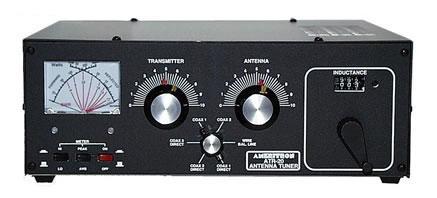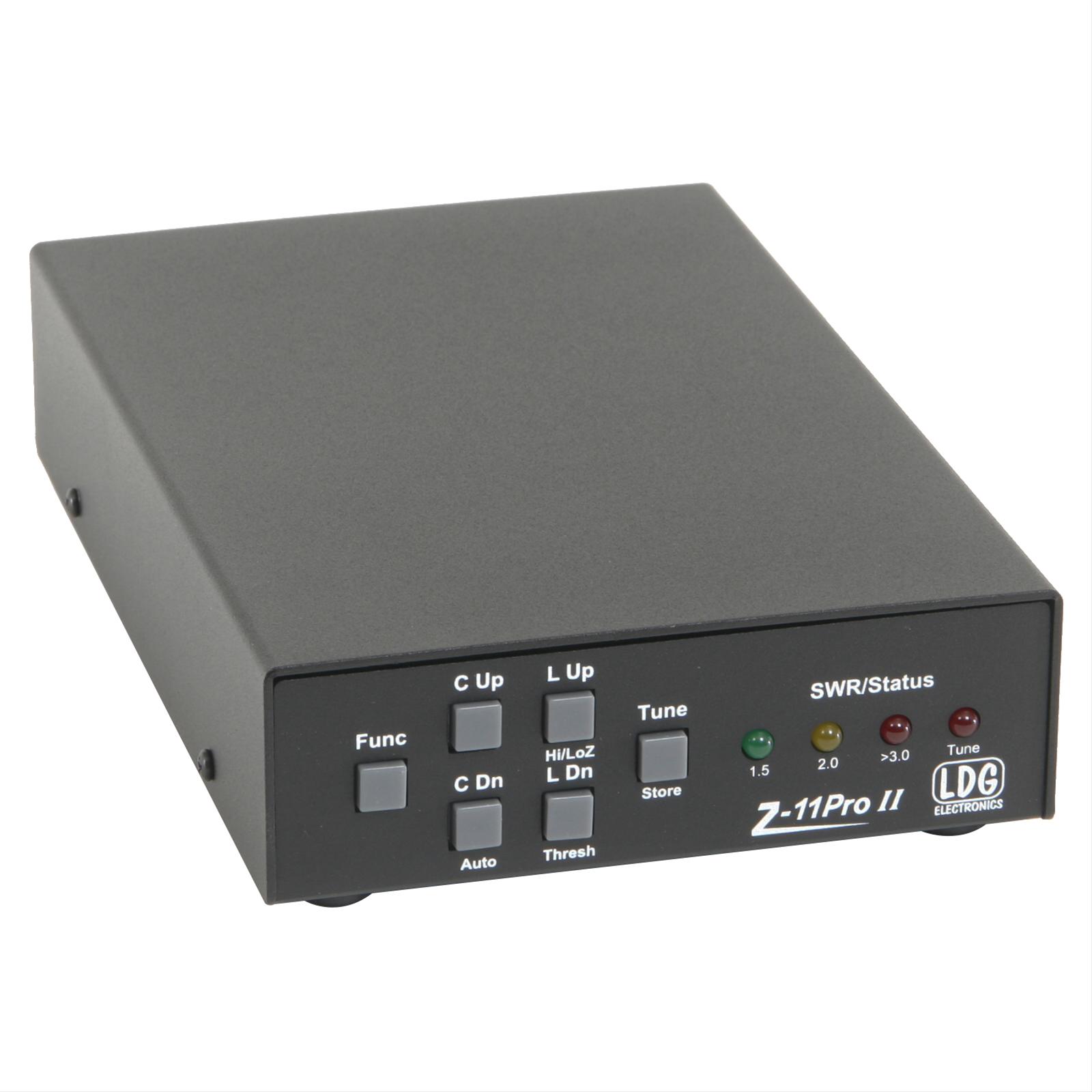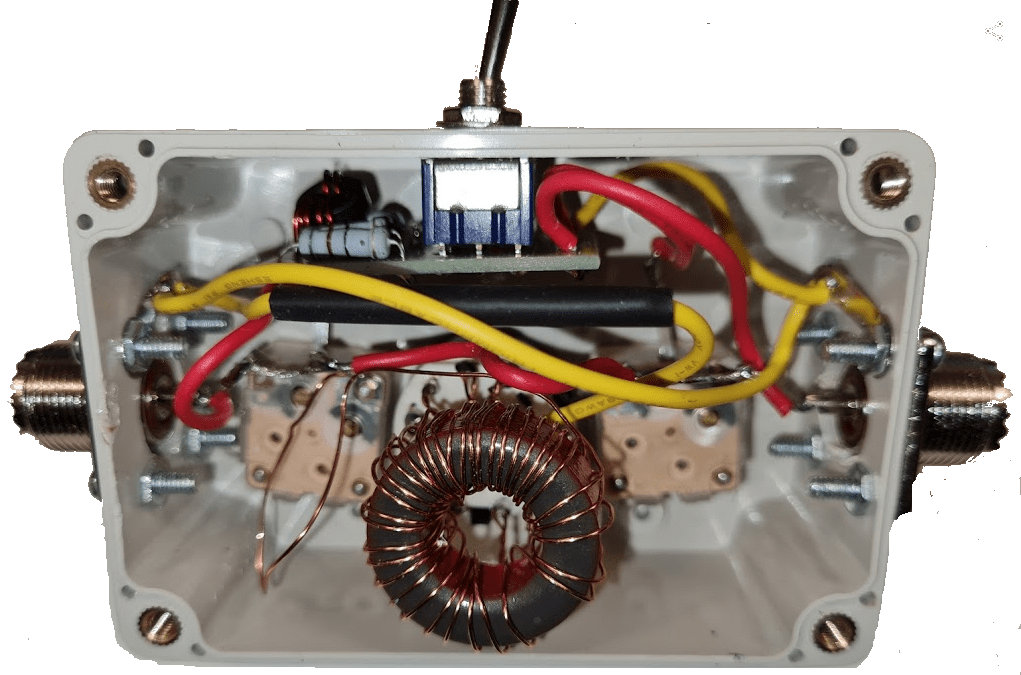
What is an Antenna Tuner?

The impedance of an antenna is a measure of its resistance to the flow of electrical current. It is usually expressed in ohms and can vary depending on the frequency of the signal being transmitted or received. The impedance of the transmitter or receiver is typically fixed, so the antenna tuner is used to match the impedance of the antenna system to ensure maximum power transfer and minimize signal loss.
Why Do You Need an Antenna Tuner?
An antenna tuner is necessary because antennas are designed to operate at a specific impedance, which may not always match the impedance of the transmitter or receiver. When the impedance mismatch occurs, it can result in poor signal quality, reduced range, and increased interference.
By using an antenna tuner, you can adjust the impedance of the antenna system to match the impedance of the transmitter or receiver, thereby optimizing the performance of the radio system. This ensures that the maximum amount of power is transferred from the transmitter to the antenna, resulting in better signal quality and improved communication.
Additionally, an antenna tuner can also help in reducing the standing wave ratio (SWR) of the antenna system. SWR is a measure of how well the antenna is matched to the transmission line and is an important factor in determining the efficiency of the radio system. A high SWR can lead to signal reflections and increased signal loss, while a low SWR indicates a good match between the antenna and the transmission line.
In summary, an antenna tuner is necessary to match the impedance of the antenna system to the impedance of the transmitter or receiver, ensuring optimal performance and minimizing signal loss. It also helps in reducing the standing wave ratio, resulting in better signal quality and improved communication.
Why Do You Need an Antenna Tuner?

An antenna tuner is an essential tool for any radio enthusiast or amateur radio operator. It is used to match the impedance of the antenna system to the impedance of the transmitter or receiver. This matching process is crucial for optimal performance and efficient transmission or reception of radio signals.
Improving Signal Quality
An antenna tuner helps improve signal quality by matching the impedance of the antenna system to the impedance of the transmitter or receiver. This ensures that the maximum amount of power is transferred from the transmitter to the antenna, resulting in a stronger and clearer signal. It also helps reduce signal reflections and standing waves, which can cause interference and distortion in the transmitted or received signal.
Protecting the Transmitter
Another important reason to use an antenna tuner is to protect the transmitter from damage. If the impedance of the antenna system is not properly matched, it can cause excessive voltage or current to be reflected back into the transmitter. This can lead to overheating, component failure, and even permanent damage to the transmitter. By using an antenna tuner, the impedance mismatch is minimized, reducing the risk of damage to the transmitter.
Overall, an antenna tuner is a valuable tool for optimizing the performance of your radio system. It ensures a proper impedance match between the antenna and the transmitter or receiver, improving signal quality and protecting the equipment from damage. Whether you are a casual radio enthusiast or a dedicated amateur radio operator, an antenna tuner is a worthwhile investment for enhancing your radio experience.
Types of Antenna Tuners
There are two main types of antenna tuners: manual antenna tuners and automatic antenna tuners.
1. Manual Antenna Tuners:
2. Automatic Antenna Tuners:
Both manual and automatic antenna tuners have their advantages and disadvantages. Manual antenna tuners are generally less expensive and can be more versatile, allowing for fine-tuning of the antenna. However, they require manual adjustment and may not be as quick or accurate as automatic tuners. Automatic antenna tuners are more convenient and can provide faster and more accurate tuning, but they are typically more expensive and may not have the same level of flexibility as manual tuners.
Manual Antenna Tuners
Manual antenna tuners are designed to be adjusted by hand, allowing the user to fine-tune the antenna system for optimal performance. They usually consist of a variable capacitor and an inductor, which can be adjusted to match the impedance of the antenna to the impedance of the transmitter or receiver.
One of the main advantages of manual antenna tuners is their simplicity. They are easy to use and require no external power source. This makes them ideal for portable or field operations where power may be limited or unavailable.
Another advantage of manual antenna tuners is their versatility. They can be used with a wide range of antennas, including wire antennas, vertical antennas, and loop antennas. This allows the user to experiment with different antenna configurations and optimize the performance of their communication system.
Manual antenna tuners are also known for their durability. They are typically built with high-quality components and are designed to withstand harsh environmental conditions. This makes them suitable for outdoor use and ensures reliable operation even in challenging situations.
However, manual antenna tuners do have some limitations. They require manual adjustment, which can be time-consuming and may require some technical knowledge. Additionally, they may not be able to match the impedance of the antenna system as precisely as automatic antenna tuners.
Automatic Antenna Tuners
An automatic antenna tuner is a device used in radio communications to automatically adjust the impedance of an antenna system. It is designed to match the impedance of the antenna to the impedance of the transmitter or receiver, ensuring maximum power transfer and minimizing signal loss.
Automatic antenna tuners are commonly used in amateur radio and other radio communication systems. They are especially useful in situations where the antenna impedance may vary due to factors such as frequency changes, weather conditions, or antenna height.
These tuners work by continuously monitoring the impedance of the antenna system and making adjustments to match it with the desired impedance. They typically use a combination of capacitors and inductors to achieve this matching.
One of the main advantages of automatic antenna tuners is their ability to quickly and accurately adjust the antenna impedance. This allows for efficient transmission and reception of signals, even in challenging conditions.
Automatic antenna tuners are available in various sizes and configurations, depending on the specific needs of the radio communication system. They can be integrated into the radio equipment or used as standalone devices.
Some automatic antenna tuners also feature built-in SWR (Standing Wave Ratio) meters, which provide real-time feedback on the performance of the antenna system. This allows the user to make further adjustments if necessary.
How Does an Antenna Tuner Work?
An antenna tuner is a device used in radio communication systems to match the impedance of the transmitter or receiver to the impedance of the antenna. It is commonly used in amateur radio and other applications where the antenna impedance may vary.
The main function of an antenna tuner is to adjust the impedance of the antenna so that it matches the impedance of the transmitter or receiver. This is important because when the impedance is mismatched, some of the signal power is reflected back to the transmitter or receiver, resulting in a loss of signal strength.
An antenna tuner works by using a network of components, such as inductors and capacitors, to adjust the impedance. These components can be manually adjusted or automatically controlled by the tuner. The tuner measures the impedance of the antenna and adjusts the components accordingly to achieve a match.
The antenna tuner can also be used to adjust the standing wave ratio (SWR) of the antenna. The SWR is a measure of how well the antenna is matched to the transmitter or receiver. A high SWR indicates a mismatch, while a low SWR indicates a good match.
By adjusting the components of the antenna tuner, the SWR can be reduced, resulting in improved signal quality. This is particularly important in radio communication systems where a high SWR can cause signal distortion and interference.
Components of an Antenna Tuner
An antenna tuner typically consists of the following components:
- Variable inductors: These are used to adjust the inductance of the tuner and match the impedance.
- Variable capacitors: These are used to adjust the capacitance of the tuner and match the impedance.
- Switches: These are used to select the appropriate combination of inductors and capacitors for the desired impedance.
- Meter: This is used to measure the impedance and SWR of the antenna.
Conclusion
An antenna tuner is an essential device in radio communication systems. It allows for the adjustment of the antenna impedance to match the impedance of the transmitter or receiver, resulting in optimal signal strength and improved signal quality. By using a combination of inductors, capacitors, switches, and a meter, the antenna tuner can effectively match the impedance and reduce the standing wave ratio. This ensures efficient signal transfer and minimizes signal loss and interference.
Matching the Impedance
Matching the impedance is a crucial step in optimizing the performance of an antenna system. Impedance is a measure of the opposition to the flow of alternating current in a circuit. In the context of antenna tuners, it refers to the impedance of the antenna and the impedance of the transmission line.
When the impedance of the antenna and the transmission line do not match, a mismatch occurs. This can result in a phenomenon called standing wave ratio (SWR), which is a measure of how well the antenna is matched to the transmission line. A high SWR can lead to poor signal transmission and reception, as well as potential damage to the transmitter.
Why is matching the impedance important?
Matching the impedance between the antenna and the transmission line is important for several reasons:
- Maximizing power transfer: When the impedance is matched, the maximum amount of power from the transmitter is transferred to the antenna, resulting in optimal signal transmission.
- Minimizing signal loss: A mismatched impedance can cause signal loss, reducing the efficiency of the antenna system.
- Protecting the transmitter: A high SWR can cause excessive voltage and current in the transmitter, potentially damaging it.
- Improving signal quality: Matching the impedance can help reduce reflections and improve the overall signal quality.
How is impedance matched?
Impedance matching can be achieved using an antenna tuner. The tuner adjusts the impedance of the antenna and the transmission line to match each other, resulting in a low SWR and optimal performance.
There are two types of antenna tuners: manual and automatic. Manual antenna tuners require the user to manually adjust the tuner to achieve the desired impedance match. Automatic antenna tuners, on the other hand, use electronic circuits to automatically adjust the tuner based on the detected impedance.
Regardless of the type of tuner used, the goal is to achieve a low SWR by adjusting the tuner’s controls. This can be done by monitoring the SWR meter and making incremental adjustments until the desired match is achieved.
Overall, matching the impedance is an essential step in optimizing the performance of an antenna system. By ensuring that the impedance of the antenna and the transmission line are properly matched, you can maximize power transfer, minimize signal loss, protect the transmitter, and improve signal quality.
Adjusting the SWR
Adjusting the SWR, or Standing Wave Ratio, is an important step in optimizing the performance of your antenna system. The SWR is a measure of how well your antenna is matched to the transmission line and the transmitter. A high SWR can result in poor signal quality, reduced range, and potential damage to your equipment.
To adjust the SWR, you will need an antenna tuner. The tuner allows you to match the impedance of your antenna system to the impedance of the transmitter. This ensures that maximum power is transferred from the transmitter to the antenna, resulting in efficient signal transmission.
There are two main methods for adjusting the SWR: manual tuning and automatic tuning.
Manual Tuning

Manual tuning involves adjusting the length of the antenna or the position of the antenna tuner’s components to achieve the desired SWR. This method requires some knowledge and experience in antenna theory and tuning techniques. It can be time-consuming and may require multiple adjustments to achieve the desired SWR.
Automatic Tuning
An automatic antenna tuner can quickly and accurately adjust the impedance of your antenna system to match the impedance of the transmitter. It uses a feedback loop to continuously monitor the SWR and make adjustments as needed. This eliminates the need for manual adjustments and allows for real-time optimization of the antenna system.
Automatic tuning is especially useful for mobile or portable operations, where manual tuning may not be practical or feasible. It allows for quick and easy setup and ensures optimal performance in various operating conditions.
Whether you choose manual tuning or automatic tuning, adjusting the SWR is an essential step in maximizing the performance of your antenna system. By achieving a low SWR, you can ensure efficient signal transmission, improved signal quality, and extended range for your communications.

Over the years, I have amassed a wealth of experience and knowledge, which I eagerly share with fellow radio aficionados. Through my writing and active participation in the amateur radio community, I strive to inspire others and provide valuable insights into this fascinating hobby. Engaging in various radio activities, I continue to learn and grow, constantly amazed by the endless possibilities that radio communication offers.

